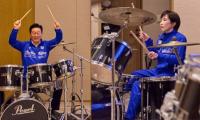Meaningful research
The best-known examples of technology-based knowledge economies built through higher education, scientific research and innovation are the Silicon Valley and the Boston’s Technology Corridor, which each contribute more than $275 billion and $ 400 billion annually to the US economy.
Many universities contribute to the success of both these regions. A 2012 study estimated that the companies formed by Stanford entrepreneurs generate $2.7 trillion in annual revenues. A 2009 study showed MIT alumni had founded 25,800 active companies worldwide, employing 3.3 million people and generating nearly $2 trillion in annual revenues. These would be the equivalent of the 10th and 11th largest economies in the world.
The modern university, with its mix of teaching, innovation and research, is different from the universities of yesteryears, which only served as teaching grounds. Universities are now the single most important producers of knowledge, scientific research and technology that lead to innovation, entrepreneurship and economic development. However, transfer of technology is essential for commercialization of research.
In Pakistan, whenever the government invests in higher education and research, stakeholders expect to see immediate returns. Research is not like building a bridge or a highway, where one can spend billions and the benefits are immediately visible. In research, the benefits may not become apparent for a decade or even more.
Let me give an example from my own research when I served as director of the Space Power Institute in the US decades ago, and with which I am still associated. In the 1980s, President Ronald Reagan launched the Strategic Defense Initiative (SDI), commonly known as ‘Star Wars’ which was a space-based missile defense system. The SDI proposed using particle beams, lasers, and kinetic energy weapons, called the rail gun, to protect the US from an attack by ballistic nuclear weapons. Reagan called upon American scientists and engineers to develop a system that would render nuclear weapons obsolete. At the same time, NASA announced the Pathfinder Mission to put a man on Mars and establish a habitable colony on the Moon.
Research was funded by the US Department of Defense and NASA. Since my own research area was high energy density storage systems, the challenge was to develop the next generation storage devices which could pack in at least a million times more energy within the same constraints of weight and volume for space launch, and yet have over 99.9999 percent reliability.
Forty years later and with over hundreds of billions of dollars spent in R&D, one can only now see the commercial and military uses of these research programs. Today we see electric vehicles, first launched by Tesla, and now being manufactured all over the world; the Hyperloop, a hypersonic magnetically levitated transport system currently in an advanced stage of development; the Space-X rocket for commercial transportation to the space station and the moon; and the mining of asteroids for rare and expensive metals. These are all becoming a reality which will use super high energy storage devices developed over the last 40 years, and the benefits becoming apparent in the next 10 to 20 years. On the military side, the Star Wars programme led to the development of the Electric Rail Gun, a hypervelocity kinetic energy weapon, which has already been deployed in US Aircraft careers, and the mobile Electromagnetic Pulse (EMP) Gun which will make enemy electronics dysfunctional. The above are examples where technology developed through university research is meaningless unless it is transferred to industry.
During my tenure as HEC chair, despite major cuts in funding, I took a large number of initiatives to promote transfer of technology for commercialization. Twenty-six (26) Outreach Programmes in Research, Innovation and Commercialization (ORICs) were established in research-based universities to bridge the link between academia and industry. Eight (8) Technology Incubators to inculcate entrepreneurship were established where none existed prior to my tenure. The first fourth-generation Science & Technology Park was conceived to be established at Islamabad.
The HEC reforms undertaken were already proving to be a success story for the developing world. Pakistan’s score in the World Economic Forum (WEF) Global Competitiveness Report 2013 showed consistent and marked improvements in indicators for Higher Education, Research & Innovation and Technology Readiness during all four years of my tenure. The number of ISI indexed research publications out of Pakistan showed an exponential growth and increased by over 50 percent just in the last two years. Scimago forecast that at the then rate of increase, Pakistan’s global research ranking would move from 43 to 27 by 2018, the second highest increase worldwide. According to the chief editor of ‘The Lancet’, May 2013, “The HEC reforms changed the culture of academia to one that is focused on research, quality and impact”.
All of the above was lost after I left the HEC, the last three years in particular being the most damaging. Many research programmes that I initiated were just rolled back for no apparent reason, most likely because the last chairperson was not a researcher and therefore had no vision of the benefits of meaningful research. The damage to the HEC must be controlled and reversed. It is important that the prime minister take immediate notice to restore university research to increase the prospects of developing a technology-based knowledge economy for Pakistan.
The writer is a former chairperson of the HEC.
-
 Ariana Madix And Tom Sandoval Settle Legal Dispute
Ariana Madix And Tom Sandoval Settle Legal Dispute -
 Justin Baldoni Says He Held A Prayer Gathering Before Deposition In Blake Lively Case
Justin Baldoni Says He Held A Prayer Gathering Before Deposition In Blake Lively Case -
 Travis, Jason Kelce React To Mom Donna's 'Traitors' Stint
Travis, Jason Kelce React To Mom Donna's 'Traitors' Stint -
 Enjoy Lee, Takaichi’s Viral Jamming Session, In Case You Missed It
Enjoy Lee, Takaichi’s Viral Jamming Session, In Case You Missed It -
 MrBeast Admits He's Unsure About Having Kids - Here's Why
MrBeast Admits He's Unsure About Having Kids - Here's Why -
 Prince Harry Carries Heartbreaking Hope For Archie, Lilibet Who Are Not Sharing In Their Royal Heritage
Prince Harry Carries Heartbreaking Hope For Archie, Lilibet Who Are Not Sharing In Their Royal Heritage -
 Tom Brady Breaks Silence On 'personal Life' After Alix Earle Rumors
Tom Brady Breaks Silence On 'personal Life' After Alix Earle Rumors -
 Guy Fieri Drops Health Update After Accident That Left Him In A Wheelchair
Guy Fieri Drops Health Update After Accident That Left Him In A Wheelchair -
 Experts Weigh In: Is Prince Harry Operating A PR Stunt Or The Invictus Games’
Experts Weigh In: Is Prince Harry Operating A PR Stunt Or The Invictus Games’ -
 Inside Kate Middleton’s Biography With Secrets From St Andrews To Harry & Meghan’s Royal Exit
Inside Kate Middleton’s Biography With Secrets From St Andrews To Harry & Meghan’s Royal Exit -
 Paul Mescal Reveals Shocking Move He Made In 'Hamnet'
Paul Mescal Reveals Shocking Move He Made In 'Hamnet' -
 'Kanye West Is Human Too'
'Kanye West Is Human Too' -
 Prince William Hands Kate Middleton Something Highly Sensitive To Manage With Coronation
Prince William Hands Kate Middleton Something Highly Sensitive To Manage With Coronation -
 Critics Get Honest About 'A Knight Of The Seven Kingdoms'
Critics Get Honest About 'A Knight Of The Seven Kingdoms' -
 Goldie Hawn Spills Secret Behind Kate Hudson’s Screen Talent
Goldie Hawn Spills Secret Behind Kate Hudson’s Screen Talent -
 Why Harry Unlikely To Meet William, Kate During UK Return?
Why Harry Unlikely To Meet William, Kate During UK Return?



